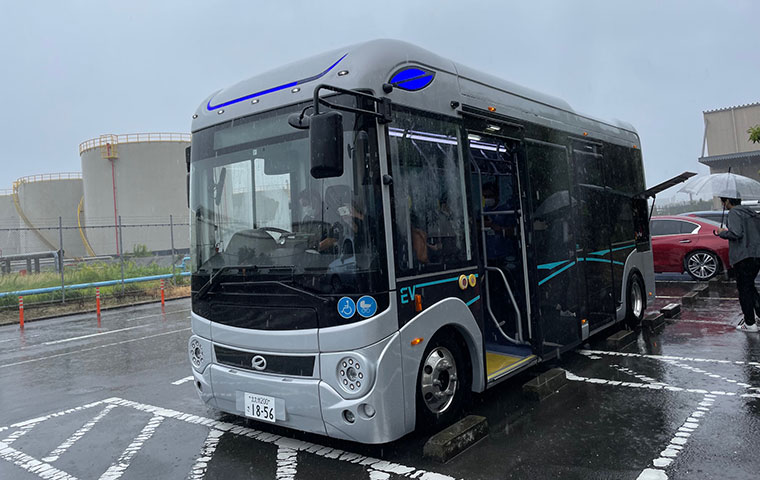Japan’s Tech Revival: New Stars Shine at CES
Related Articles
From Chaos to Order: Fresh Energy at the Japan Pavilion

January 2025, Las Vegas. More than 140,000 people flocked to CES, one of the world’s largest technology trade shows, in search of the future. In a corner of Eureka Park, the startup-only area, Japan’s technological innovation was breathing anew. The Japan (J-Startup) Pavilion, led by the Japan External Trade Organization (JETRO), was more than a mere exhibition booth—it was a strategic stage proclaiming Japan’s resurgence to the world.
The pavilion’s theme—“Organized Chaos”—symbolized Japan’s new innovation strategy itself. It expressed the will to harness the explosive creativity (chaos) of 31 carefully selected startups spanning AI, robotics, sustainability, and more, by means of a finely tuned, government-led support system (organized)—and then unleash it onto the global market. JETRO’s support went far beyond providing space. Exhibitors received comprehensive assistance: English-language pitch training to confidently convey their vision to global media and investors, help with applications for CES’s prestigious Innovation Awards, and more. At the pavilion’s center stood a networking space and pitch stage called “Moonshot Cafe,” designed to spark serendipitous encounters and conversations. This marked a shift from static product displays of the past to a more sophisticated national strategy focused on relationship-building and co-authoring Japan’s technology story with the world. Japan is no longer merely a country that “shows products.” It presented the ecosystem that co-creates the future in dialogue with the world.
Top Honors That Prove the Tech: Japanese Innovations That Astonished the World
The Japan Pavilion’s new direction was powerfully validated by concrete technical achievements. Chief among them: seven exhibitors took home Innovation Awards, including BionicM’s powered prosthetic “Bio Leg,” which won the Best of Innovation grand prize.
Bio Leg stands apart from conventional passive prosthetics. Equipped with a motor and AI sensors, it replaces lost muscular strength with robotics, enabling natural, stable walking even on stairs and slopes. This breakthrough stems from the lived experience of CEO Xiaojun Sun, who lost his right leg in childhood; his personal challenge was transformed into a technology addressing a universal social issue. Remarkably, BionicM is not just a research-and-development outfit. It has already secured FDA registration and insurance coverage in the U.S., established its American headquarters in Virginia, and is accelerating sales in the world’s largest market. This shows that Japanese startups are acquiring not only technological prowess, but also the ability to execute global business strategies.
BionicM’s success is just the tip of the iceberg. Qolo presented next-generation mobility assistance that helps wheelchair users stand; Asuene supports enterprises in achieving carbon neutrality; SceneryScent is creating new VR experiences through olfactory technology. Across diverse domains, Japanese startups shone brightly. These movements resonated with initiatives by major corporations—such as Toyota’s futuristic Woven City concept and Panasonic’s AI strategy—highlighting how Japan’s innovation engine advances on two wheels: startups and large enterprises. Shedding the old appliance-centric image, Japan is tackling fundamental social challenges like accessibility and sustainability with deep tech. That is the core of Japan’s renewed technological strength showcased at CES 2025.
A Public–Private Ecosystem: The Driving Force Behind the Startup Surge
The striking results at CES were no accident. They are the crystallization of a startup ecosystem painstakingly built over recent years by Japan’s public and private sectors acting in concert. At its core is the government’s Five-Year Plan for Startup Development announced in 2022. With ambitious targets—100,000 startups created and 100 unicorns—policies have been rapidly implemented.
Multifaceted support has enriched the startup soil: the J-StarX program for entrepreneurs’ overseas expansion; the expanded “Unexplored (Mitō)” initiative to discover and train young IT talent; preferential stock option tax treatment to attract top people; and more. JETRO’s robust backing at CES is part and parcel of this national strategy. Another crucial pillar is the surge in university-based startups. In 2024, ventures originating from universities hit a record 5,074, driven by institutions like the University of Tokyo and Kyoto University. BionicM, winner of Best of Innovation, is itself a University of Tokyo spin-out. This demonstrates that government programs—such as START (Program for Creating Startups from Advanced Research and Technology), which guides promising lab research into commercialization—are bearing fruit.
In step with this trend, venture capital investment—despite global market swings—has remained vastly higher than a decade ago. CVCs (corporate venture capital) and government-affiliated funds are playing growing roles, diversifying capital supply. From academic research, to government-backed commercialization, to global market entry—Japan is building a national pipeline that systematically generates innovation, and its results blossomed on the stage of Las Vegas.
A Return to the World Stage: The Future and Challenges for Japan’s Startups

The success at CES 2025 can be called a proof of concept that Japanese technology can once again shine at the center of the world. But it is only the beginning of a long road to a full-fledged revival. To become true global leaders, Japanese startups must overcome significant obstacles—foremost among them, raising the massive “late-stage” growth capital needed to scale rapidly.
While financing conditions for the seed and early stages have improved in Japan, the domestic investor base remains thin for companies in growth phases requiring tens to hundreds of millions of yen—indeed, often billions—especially for deep-tech firms like BionicM that need heavy upfront investment in manufacturing and large clinical trials. This “funding cliff” pushes many promising companies toward early IPOs on the Tokyo Stock Exchange Growth market while still relatively small. Early listings may secure short-term funds, but risk undercapitalizing companies for battles against global giants, potentially hampering long-term growth. Overcoming this structural issue is key to completing Japan’s tech revival.
To that end, Japan must leverage its CES success to actively showcase the quality of its startups to overseas late-stage investors and draw in more global capital. At the same time, it is essential to create conditions that allow domestic pension funds and institutional investors to take larger, growth-oriented risks. CES 2025 proved that Japan has regained the ability to generate innovation. The next five years will test whether it has the ability to scale that innovation globally. Can the new stars that dazzled in Las Vegas become fixed stars that light the world? Japan’s real challenge begins now.


